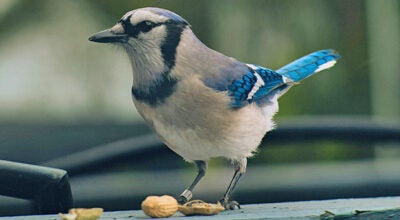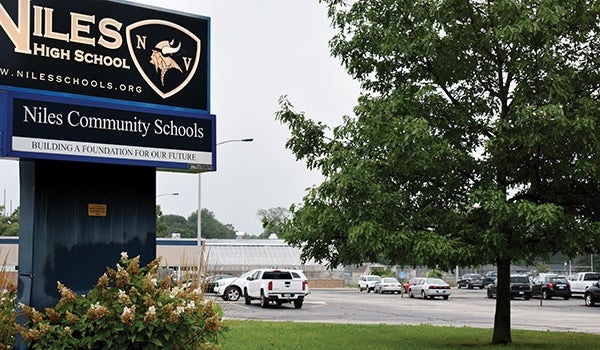Baja Calif. ideal for birds, whales
Published 4:06 pm Friday, March 15, 2013
- Chuck Nelson of Sarett Nature Center at Dowagiac Rotary Club March 14
Sarett Nature Center’s Chuck Nelson has led trips to every continent twice.
Except Antarctica.
He’s only been there once.
Valentine’s Day 2012 found him back in Baja California, the desert spit hanging off California like a sandy icicle prized by birders and whale watchers.
“It’s drifting off into the Pacific Ocean,” he said. “It’s actually in Mexico. The gang that went with us included several Dowagiac people,” including retired Justus Gage teacher Ann Biek.
Forty-one years ago, he offered a birding lesson that blossomed into a club.
Last winter’s summery weather destroyed cross-country skiing and snowshoeing.
“We didn’t have a flake of snow until 2 in the morning when we got ready to go, then the heavens opened up,” he groused of the slog to Chicago for the flight in a small plane which flies to Baja’s modern airport weekly.
“It’s become Mecca for all kinds of people who love beaches because it’s 2,000 miles long,” Nelson said. “Two guys who run the place with their five dogs both married tourists. Gray whales are all over the place, and it’s great for birding,” from agile frigate birds which weigh just three pounds, yet enjoy seven-foot wing spans, disdain getting wet and are known as “robbers of the sea” for thrashing blue-footed boobies.
There are also orioles, finches, territorial mockingbirds which “guard” snow berries and endemic Xanthus hummingbirds, which means they live nowhere but there.
“If you want to see it, you have to go there,” said Nelson, whose group swam with sea lions. “If you want to see it again, you have to go back. There are settlements every 30 miles because that’s how far missionaries could go in one day. Everything is built from little sticks inside of cactus and palm. Each town writes its history on its buildings. This one was a great place for sugar cane until wells went dry. After 20 years, they filled up again and now it’s a tourist place. Tourists like celebrations, so this town celebrated something every day. People making things aren’t from there. This guy’s from Idaho and she’s from Chicago. All the kids speak English” and can translate for older Spanish-speaking citizens.
“It never rains for more than 10 minutes and everyone drinks margaritas,” he said.
Mid-sized gray whales venture into shallow water and become encrusted with barnacles.
They rowed out to watch gray whales have babies. Beware the blow hole, which sprays a slimy steam like a fire hose that coats eyeglasses with film.
“Females are bigger than males,” he said. “She nudges the baby away. She doesn’t want us getting too close. If she nudged the boat away, we’d tip over, but they go the other way.”
“We do lots of things and tons of trips,” Nelson told Dowagiac Rotary Club Thursday at Elks Lodge 889. “We just got done teaching 50 kids about maple syrup.”
Sarett, with 10 naturalists, has more than Michigan.
The Berrien County facility at 2300 Benton Center Road, Benton Harbor, besides nature classes and travel, is a 1,000-acre wildlife sanctuary with eight miles of hiking trails, boardwalk pathways, scenic overlooks and towers, a tree-top walkway, cross-country skiing trails, snowshoeing, kayaking, live animals and a butterfly house from May until September.
Closed Mondays, hours are: 9 a.m.-5 p.m., Tuesday-Friday; 10 a.m.-5 p.m. Saturday; and 1-5 p.m. Sunday.
Sarett natural history tours
• Smoky Mountains, April 16-20, for the profusion of woodland wildflowers at Cove Hardwoods, Clingman’s Dome and Cades Cove in the Tennessee national park.
• Texas birding, May 1-7.
• Northern birding, late May in the Upper Peninsula.
• Kayaking on the Pere Marquette, June 7-9.
• Michigan adventure, late July, in and around Sleeping Bear Dunes National Lakeshore and Traverse City.
• Fossils, Aug . 13-16, in Alpena with paleontologist “Paleo Joe” Schodl.
• Tetons and Yellowstone, Sept. 14-21, with Old Faithful at Yellowstone. Look for bison, elks, moose, mule deer and beaver.
• Fall color in eastern Ontario, early October.
• Hawaiian cruise, November.







